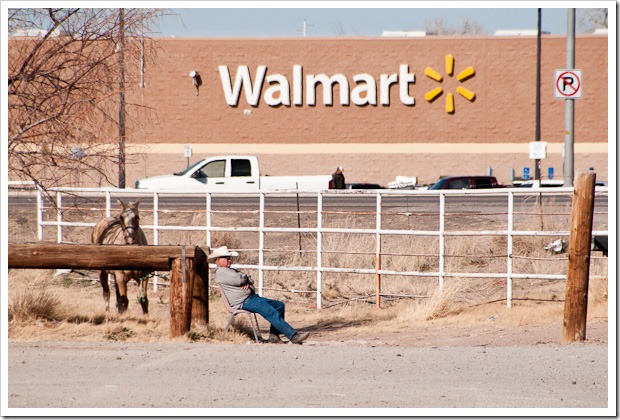“It’s not for me to know; it’s for me to find out (discover).” This thought is what came to me as I browsed through some William Albert Allard images on the National Geographic site online. Allard, a 50 year contributor to the Geographic, is known for his incredible use of color as a compositional tool as well as his intimate stories in light other photographers wouldn’t choose to use.
What struck me as I looked at his images is how close he gets to his subjects. I’m not talking about positional distance, although he does that too. I mean how intimate the images become. It is as if he captures that essence of a moment that shows the subjects in all their three dimensional human depth. It is as if he manages to make an image from inside the subject’s defenses, from beyond the mask.
And even more, what Allard manages to capture in these images is not only the subject, but a piece of himself. And in doing so he captures a piece of me. Repeatedly I’ve found myself looking at an image thinking, “I know that feeling!” There is a piece of me in those images, and I imagine there is a piece of Allard, and of you too. That is good photography!
So why do I share all this? Well, I try to be better and better at photographing. I’m trying to learn what makes a good image and I’m trying to learn how to do it myself. A friend of mine suggested not too subtly that I not collect my own work but rather collect the good works of others. He suggested this mostly to spur along my artistic efforts, I know. And he has succeeded. So, I’ve been perusing the works of others including Allard, Steve McCurry, Larry Towell, Martin Parr, Yousuf Karsh and others. and I keep asking myself, “how did/do they do that?”
That question is not about the technical aspect of an image; I can figure that part out. It’s about the access; it’s about the edit; it’s about the moment; it’s about the intimacy; it’s about recognizing what matters out of all the uncontrollable chaos that exists in the world swirling around us all the time. And I realize, it is not for me to know by looking at others’ work; it is for me to discover – in the world, in front of my camera, in my images. These photographers managed to capture the images they did because they went seeking that intimacy. They let themselves become known and they let themselves discover others.
They got close, really close, and found that reflection of themselves in others and made an image of that. So, the question then arises, is how do I find that reflection of myself in my subjects, in the world? And show it?


I’m spending less time online and when I do get on here I tend to be focused with what I choose to read. I notice I prefer the more occasional blog writing versus the daily-export style. The tone tends to be deeper, like this one of yours today. Loved your thoughtful questioning and the *exposure* of that questioning. If you have this tone in your writing, I’d say the odds are quite good that you will be getting that in your photographs.
You go, Brian!
Thanks so much, Kathy. I really appreciate your feedback! I find it a difficult balance to find. Of course I want an audience (you know, the positive feedback the ego desires) and yet I want my writings and postings to be of value and therefore of depth. Too much posting and I risk being a nagging voice chattering in the trees like an anxious squirrel; too little posting and my ego starts to peck at me, anxious about losing readers. That is the challenge of the blogger, I imagine. Or it is just mine. Either way, difficult to balance at times.
I’m so happy you count my writings as being valuable enough to spend some precious time with.
I’ll keep going! 🙂
Brian
p.s. Is that your Walmart cowboy? Fantastic!!
Yep. My cowboy. I couldn’t resist. 😉
Brian
I agree about the Wal-Mart cowboy; it’s a great image. I also like your thoughtful and wise piece on studying the work of others and learning from them. Mentors and classics are two key components of Thomas Jefferson Education, a school of thought that has strongly influenced me as a homeschooling parent. The mentor doesn’t have to be a human sitting next to you. A mentor can be accessed via books, artworks, online … . The important part is studying those who do it well, so you can learn to do it well also. It sounds like you have a smart friend.
Thanks Cheryl. I’m glad you liked this image and my accompanying words. I just received Allard’s latest book, Five Decades: A Retrospective. I highly recommend it if you get a chance to buy it and read it.
My friend, Ray Ketcham, might dispute being smart but he knows something about the life of the artist. In another book he recommended, The Shape of Content, there is much discussion about the value of, and reason for, education. You might like it.
Thank you for the book suggestion, Brian. I just added it to my Amazon wishlist.
Actually, I should have written book suggestions: The Shape of Content and Five Decades. I added both to the wishlist.
I don’t think you’ll be sorry. I bought Five Decades from Amazon used, for something like $6 plus shipping. It was listed “like new” but is basically brand new!! Makes me very happy!!